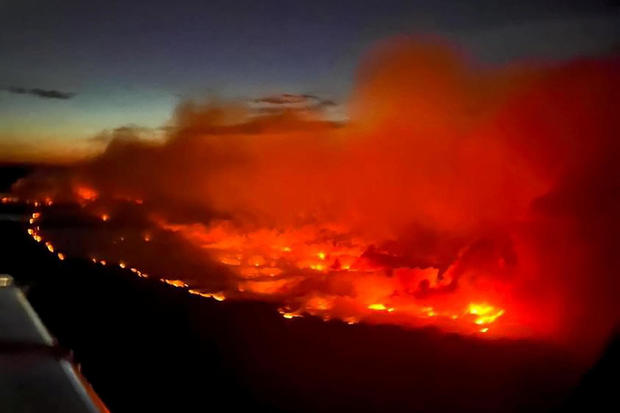Why does Canada have so many wildfires?
Toronto — Wildfire season has arrived in full force in Western Canada, prompting evacuation orders and alerts in several towns in British Columbia and neighboring Alberta due to the danger of uncontrolled blazes. According to the BC administration's latest wildfire situation report, seven evacuation orders and five alerts had been issued in the province since Friday, driving about 4,700 residents from their homes.
"The situation is evolving rapidly," British Columbia's emergency management minister Bowninn Ma warned Monday, as officials said there were 130 active wildfires burning, 14 of them deemed out of control.
Thousands more people got evacuation orders Tuesday as strong winds pushed a raging fire closer to the oil-rich town of Fort McMurray, in Alberta province. Josee St-Onge, a spokesperson for the Alberta wildfire service, said that due to the intensity of the blaze, firefighting crews were pulled back from the front line Tuesday for safety reasons.
"We are seeing extreme fire behavior. Smoke columns are developing, and the skies are covered in smoke," St-Onge said at a news conference.
The 2023 wildfire season in Canada was the worst on record, with 6,551 fires scorching nearly 46 million acres, from the West Coast to the Atlantic provinces and the far north. The impact on the environment, particularly air quality, in both Canada and the United States was profound. As predicted, 2024 is shaping up to be another devastating wildfire season, and disaster and climate experts have a pretty good idea of why.
Most of the fires now ravaging Canada have actually been burning since last fire season, having smoldered slowly during the winter under the snowpack.
Scientists say these blazes, sometimes called zombie fires, are a stark reminder of the impact of climate change. Studies have linked the overwinter fires to ongoing drought conditions amid the increasingly hot, dry springs Canada has experienced in recent years. Scientists say less precipitation and warmer winter temperatures mean fires can keep burning in the dense layers of vegetation under the snowpack.
Sonja Leverkus, an ecosystem scientist in British Columbia who also works as a firefighter, told CBS News on Monday that the northeast of the Canadian province has so many wildfires at the moment "because we are in a severe drought for a third year in a row."
She said the parched conditions were likely to make things worse before they get any better.
Leverkus has been on the front line of the battle against fires in her hometown of Fort Nelson, where she and her teammates and their communities are currently under evacuation orders.

"Many of the current fires this week were 2023 wildfires that overwintered below ground," she said. "We are heavy into spring, with low relative humidity, high wind, heat, and zero precipitation. Hence, wildfires."
Wildfire expert Ben Boghean, commenting this week on the blaze currently threatening the Parker Lake community in British Columbia, said Sunday that last year's severe drought conditions have enabled fires to spread at dizzying rates this spring, and due to the below-normal snowpack new fires are also erupting more easily.
- In:
- Climate Change
- Wildfire
- Global warming
- Fire
- Disaster
- Canada
Disclaimer: The copyright of this article belongs to the original author. Reposting this article is solely for the purpose of information dissemination and does not constitute any investment advice. If there is any infringement, please contact us immediately. We will make corrections or deletions as necessary. Thank you.
Title:Why does Canada have so many wildfires?
Url:https://www.investsfocus.com







